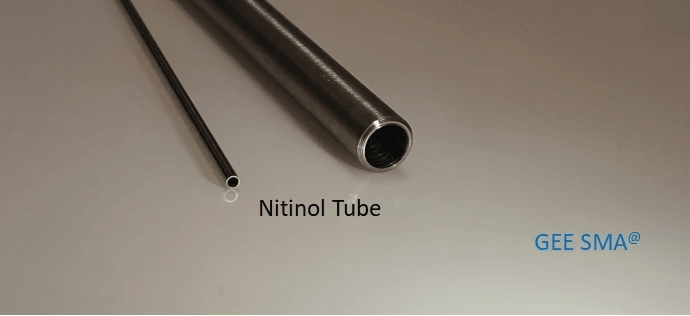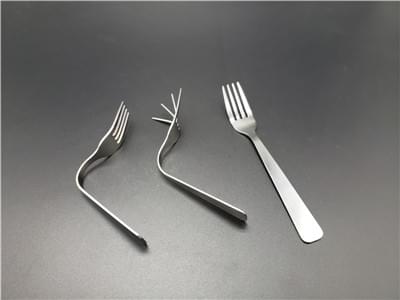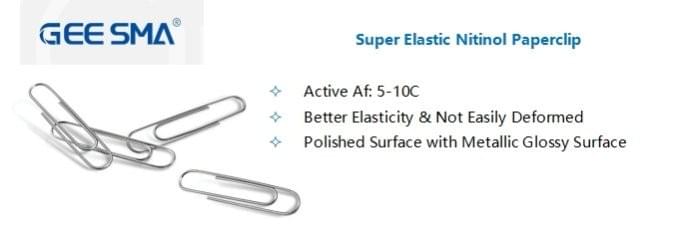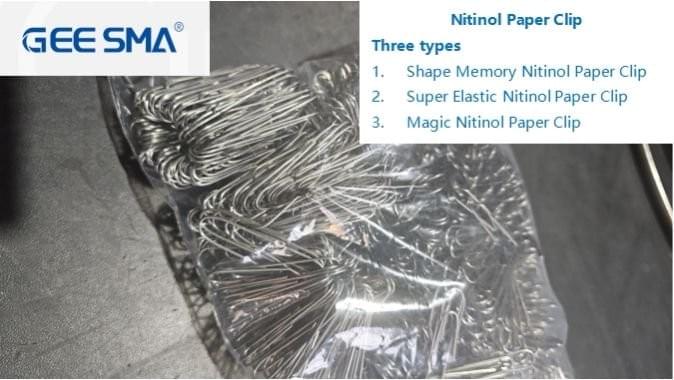Introduction
Welcome to the fascinating world of Nitinol memory alloys, where science meets magic in the most unexpected ways. Nitinol wire, a remarkable blend of nickel and titanium, showcases a unique ability to remember its original shape after deformation. This extraordinary characteristic is what we fondly refer to as nitinol magic, transforming mundane applications into innovative solutions.
Discovering Nitinol Memory Alloys
Nitinol memory metal was first discovered in the 1960s and has since sparked interest across various industries due to its incredible properties. The unique composition of this alloy allows it to undergo significant changes in shape and size while maintaining resilience and flexibility. As researchers continue to explore its potential, the versatility of Nitinol wire has led to groundbreaking advancements in fields ranging from medicine to aerospace.
The Magic Behind Nitinol Designs
The nitinol magic lies not only in its shape memory effect but also in the creative designs that can be crafted using this remarkable material. From intricate mechanisms like the Nitinol Motor to artistic sculptures that move with purpose, customization plays a pivotal role in maximizing its potential. By harnessing these unique features, designers are able to create tailored solutions that meet specific needs while showcasing the beauty of engineering.
Why Customization Matters
Customization matters because it allows for the development of specialized applications that can adapt seamlessly to diverse requirements. With Nitinol wire’s inherent properties, engineers can design components that are not only functional but also aesthetically pleasing—transforming everyday objects into captivating works of art infused with nitinol magic. As industries evolve and demands change, personalized solutions will be key in unlocking new possibilities for innovation and efficiency.
What is Nitinol Memory Alloy?

Nitinol memory alloy, often described as a marvel of modern materials science, combines unique properties that make it stand out in various applications. This special alloy, primarily composed of nickel and titanium, exhibits remarkable capabilities such as the shape memory effect and superelasticity. Understanding how Nitinol wire functions is key to unlocking the nitinol magic that has captivated engineers and designers alike.
Understanding Nitinol Composition
Nitinol's composition plays a critical role in its extraordinary characteristics. It consists mainly of nickel (around 55%) and titanium (around 45%), which together create an alloy that can remember its original shape after deformation. This unique blend not only contributes to the nitinol magic but also ensures that the material can revert to its predetermined form when exposed to certain temperatures.
The precise ratio of nickel to titanium can be adjusted to tailor specific properties, such as transformation temperature and flexibility. This customization allows for a wide range of applications across industries, from medical devices to robotics. The understanding of Nitinol composition is essential for harnessing its potential effectively.
Applications of Nitinol Memory Metal
The versatility of Nitinol memory metal opens doors to numerous innovative applications across various fields. In medicine, it's used in stents and guidewires due to its ability to expand or contract based on body temperature—showcasing that nitinol magic in action! The aerospace industry also benefits from this remarkable material; lightweight yet strong components made from Nitinol are crucial for enhancing performance in space missions.
Beyond these sectors, Nitinol finds use in consumer products such as eyeglass frames that can return to their original shape after bending or twisting. Its application extends even into robotics where it powers actuators known as Nitinol motors—demonstrating yet another facet of this incredible alloy's adaptability. As we explore further into the realm of nitinol magic, it's clear that the possibilities are virtually endless.
How Nitinol Wire Functions
Understanding how Nitinol wire functions reveals a fascinating interplay between temperature and structural changes within the material itself. When heated above a specific transformation temperature, deformed Nitinol wire remembers its original shape and returns accordingly—this process exemplifies the core principle behind nitinol magic! Conversely, when cooled down below this threshold, it becomes malleable again, allowing it to be reshaped effortlessly.
This unique behavior makes Nitinol wire an ideal candidate for various applications requiring dynamic movement or actuation without traditional mechanical systems' complexity or bulkiness. For instance, when integrated into devices like robotic arms or prosthetics via specialized control mechanisms—Nitinol motors can provide smooth motion with minimal energy consumption while maintaining strength and resilience under stress. Thus, understanding how these wires function is vital for engineers aiming to leverage their magnetic properties effectively.
The Science of Nitinol Magic

Nitinol magic lies in its remarkable properties that defy conventional materials. This unique alloy, known for its shape memory effect, exhibits extraordinary capabilities that make it a favorite in various applications, from medical devices to robotics. Understanding the science behind Nitinol wire reveals why it has become synonymous with innovation and creativity.
Shape Memory Effect Explained
At the heart of Nitinol memory metal is the shape memory effect, a phenomenon where the material can return to a predetermined shape when heated above a certain temperature. This means that if you bend or twist Nitinol wire into an unusual form, it will magically revert to its original shape when exposed to heat. This incredible feature is not just fascinating; it's what enables engineers and designers to create intricate components for Nitinol Motors and other devices that require precise movements.
The magic of this effect lies in the arrangement of atoms within the alloy. When cooled, Nitinol can exist in two different phases: one is martensitic (the deformed state), and the other is austenitic (the original state). When heated past its transformation temperature, these atomic structures rearrange themselves, allowing the wire to regain its original configuration—truly showcasing the wonder of Nitinol magic!
Transformation Temperatures
Transformation temperatures are critical in determining how and when Nitinol wire will exhibit its shape memory effect. These temperatures vary based on specific compositions of nickel and titanium used in creating Nitinol memory metal. Typically, there are two key temperatures: Af (austenite finish) and Mf (martensite finish), which dictate at what points the material transforms between its two states.
Understanding these transformation temperatures allows engineers to customize Nitinol's behavior for specific applications—whether it's designing surgical tools that need to operate at body temperature or creating actuators for robotics that function optimally at room temperature. The versatility offered by adjusting these temperatures makes customization an essential aspect of working with this magical material.
Moreover, knowing how temperature affects performance helps debunk misconceptions like Is Nitinol magnetic? Since it’s primarily non-magnetic due to its composition, understanding these thermal properties becomes even more crucial when integrating it into electronic systems or other sensitive environments.
Nitinol’s Resilience and Flexibility
The resilience and flexibility of Nitinol are part of what makes this alloy so enchanting—it's not just about returning to shape; it's also about enduring stress without permanent deformation or failure! Unlike traditional metals that may crack under pressure, nitinol can undergo significant deformation while maintaining structural integrity thanks to its unique atomic structure.
This resilience allows for innovative designs across various sectors—think surgical stents expanding within arteries or flexible robotic arms mimicking human movement—all made possible through customized designs using nitinol wire. The ability to combine strength with flexibility underscores why many industries are embracing this material as they seek solutions that marry durability with functionality.
In summary, understanding the science behind nitinol magic reveals why this extraordinary alloy continues captivating researchers and engineers alike! With each new application utilizing nitinol memory metal—from medical devices like stents to advanced robotics—the possibilities seem endless as we explore further into what makes this material so special.
Customizable Nitinol Designs

Nitinol memory metal offers a remarkable canvas for innovation, enabling designers to create solutions that are not only functional but also tailored to specific applications. The unique properties of Nitinol wire allow for diverse customization, making it an ideal choice for industries ranging from aerospace to medical devices. With the magic of Nitinol at our fingertips, the possibilities for customizable designs are virtually limitless.
Unique Features of Nitinol Motor
The Nitinol Motor stands out as a fascinating application of nitinol magic, leveraging the shape memory effect to convert thermal energy into mechanical work. This motor operates silently and efficiently, making it perfect for applications where noise and vibration are concerns. Its lightweight nature and compact size further enhance its appeal, providing engineers with a powerful tool in their design arsenal.
Tailoring Designs for Specific Needs
Customization is where the true potential of Nitinol wire shines through; engineers can tailor designs to meet specific requirements across various sectors. Whether it's creating specialized actuators or developing intricate mechanisms that respond dynamically to temperature changes, nitinol memory metal allows for bespoke solutions that traditional materials simply can't match. By addressing unique challenges with customized Nitinol designs, industries can optimize performance while enjoying the benefits of this extraordinary material.
Crafting Functional Art with Nitinol
Beyond industrial applications, the artistry inherent in customizable Nitinol designs opens doors to crafting functional art pieces that captivate and inspire. Artists and designers are increasingly drawn to the versatility of nitinol magic; they can create sculptures or installations that move or change shape in response to environmental conditions like temperature or light. This fusion of technology and creativity not only enhances aesthetic appeal but also highlights how nitinol wire can transform everyday objects into mesmerizing works of art.
Exploring GEE SMA Innovations

In the realm of Nitinol magic, GEE SMA stands out as a pioneer in the manufacturing and application of Nitinol memory metal. Their commitment to high-quality production ensures that every piece of Nitinol wire meets rigorous standards, making it suitable for a variety of demanding applications. With advancements in technology, GEE SMA continues to push the boundaries of what can be achieved with this remarkable material.
High-Quality Nitinol Manufacturing
High-quality manufacturing processes are essential for harnessing the full potential of Nitinol wire. GEE SMA employs state-of-the-art techniques that ensure each strand and component exhibits the desired shape memory effect, which is central to the magic of Nitinol. This precision not only enhances performance but also guarantees reliability across diverse applications, from medical devices to aerospace technologies.
The meticulous attention to detail in crafting Nitinol memory metal means that engineers can trust its behavior under various conditions. Whether it’s used in a delicate surgical tool or a robust automotive part, quality control remains paramount at every stage of production. Such dedication not only showcases GEE SMA's expertise but also reinforces their position as leaders in the field.
GEE SMA's Role in Space Missions
When it comes to space exploration, every component must be reliable and efficient; this is where GEE SMA's innovations shine brightly like a star against the vast cosmos. The unique properties of Nitinol memory metal make it an ideal candidate for various applications within space missions, from actuators to mechanisms that require precise movements under extreme conditions. Utilizing Nitinol wire allows engineers to design lightweight yet resilient systems that can withstand the rigors of outer space.
Moreover, as we venture further into uncharted territories, having materials that exhibit resilience and flexibility becomes crucial for mission success. The shape memory effect inherent in Nitinol motors allows them to return to predetermined shapes after deformation—an invaluable trait when dealing with unpredictable environments like those found beyond our atmosphere. Thus, GEE SMA’s contributions are not just innovative; they’re essential for pushing humanity into new frontiers.
Meeting Custom Requirements with Precision
Customization is key when working with advanced materials like Nitinol memory metal; it's what transforms ordinary designs into extraordinary solutions tailored specifically for client needs. At GEE SMA, meeting custom requirements isn’t just an afterthought—it’s part of their core mission to provide bespoke solutions that cater directly to individual project specifications. By leveraging their expertise in crafting specialized components from high-quality Nitinol wire, they ensure clients receive exactly what they envision.
This level of customization extends beyond mere aesthetics; it encompasses functionality and performance enhancements too—think specialized shapes or specific transformation temperatures tailored for unique applications! The flexibility offered by customizable designs further enhances the already impressive capabilities associated with nitinol magic and its transformative properties within various industries. As businesses seek innovative ways to solve complex challenges, partnering with experts like GEE SMA ensures access to cutting-edge solutions crafted precisely for their needs.
Is Nitinol Magnetic?

Debunking Common Myths
One prevalent myth about Nitinol is that it behaves like typical metals when it comes to magnetism. However, Nitinol wire is primarily composed of nickel and titanium, which do not exhibit ferromagnetism under normal conditions. This means that while some may expect the nitinol magic to include magnetic properties, the reality is quite different—Nitinol does not attract magnets like iron or cobalt.
Furthermore, this misunderstanding often leads to confusion in applications where magnetism plays a crucial role. For instance, people might assume that incorporating Nitinol into electronic devices would result in undesirable magnetic interference. In truth, because Nitinol memory metal lacks significant magnetic properties, it can be safely used in various electronic applications without concern for unwanted magnetic effects.
Magnetic vs. Non-Magnetic Properties
To clarify further, it's essential to distinguish between different types of materials in terms of their magnetic behavior. Ferromagnetic materials are those that can be magnetized and maintain their magnetization; examples include iron and nickel. Conversely, Nitinol wire falls into the category of non-magnetic materials due to its lack of permanent magnetization and minimal response to external magnetic fields.
This distinction is crucial when discussing applications for Nitinol Motor systems or other technologies involving shape memory alloys (SMAs). The non-magnetic nature allows engineers and designers to utilize nitinol without worrying about interference from external magnets or electromagnetic fields—an advantage in precision engineering and high-tech environments.
Applications of Nitinol in Electronics
Despite its non-magnetic properties, the versatility of nitinol magic shines through in various electronic applications where its unique characteristics come into play. For instance, the shape memory effect inherent in Nitinol allows for innovative designs such as actuators or switches within devices without relying on traditional mechanical components. These features enable engineers to create lighter and more efficient systems while maintaining functionality.
Moreover, customizations using nitinol wire open doors for bespoke solutions tailored specifically for niche markets within electronics—from robotics to medical devices—where compact size and reliability are paramount. As we explore how nitinol memory metal integrates into modern technology, we see an increasing trend toward utilizing its unique attributes rather than traditional metallic properties.
In conclusion, while many may wonder if Is Nitinol magnetic? they will find instead a material rich with potential yet free from the constraints associated with magnetism—making it an ideal choice across diverse industries seeking innovation through customization.
Conclusion
As we wrap up our exploration of Nitinol and its remarkable capabilities, it's clear that the allure of Nitinol magic is just beginning to unfold. This extraordinary material, with its unique properties, has the potential to revolutionize various sectors, from medical devices to robotics. The future promises exciting advancements as researchers continue to unlock new applications for Nitinol wire and its innovative designs.
The Future of Nitinol Magic
The future of Nitinol magic lies in its ability to adapt and transform in ways that traditional materials simply cannot match. With ongoing research focused on enhancing the properties of Nitinol memory metal, we can expect breakthroughs that could redefine manufacturing processes and product designs. Imagine a world where everyday items respond dynamically to their environment—this is not just a dream but an impending reality thanks to Nitinol.
Transforming Industries with Nitinol
Nitinol is already making waves across numerous industries, showcasing its versatility and effectiveness in applications ranging from aerospace engineering to healthcare solutions. The unique characteristics of the Nitinol Motor are paving the way for more efficient systems that require less energy while providing superior performance. As industries embrace this innovative material, we will witness transformative changes that enhance productivity and sustainability.
Engaging with Custom Nitinol Solutions
Engaging with custom Nitinol solutions opens doors to endless possibilities tailored specifically for individual needs or project specifications. Whether it’s designing bespoke components using Nitinol wire or creating intricate devices leveraging the shape memory effect, customization allows for innovation without limits. As we delve deeper into understanding whether Is Nitinol magnetic? or exploring other properties, one thing is certain: engaging with this magical material will continue to inspire creativity across disciplines.

